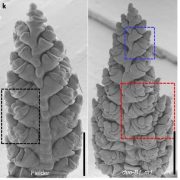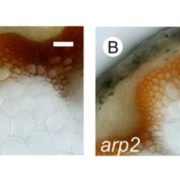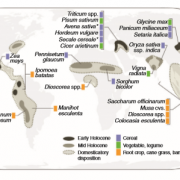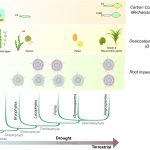Review: Fleshy structures associated with ovule protection and seed dispersal in gymnosperms (Crit. Rev. Plant Sci.)
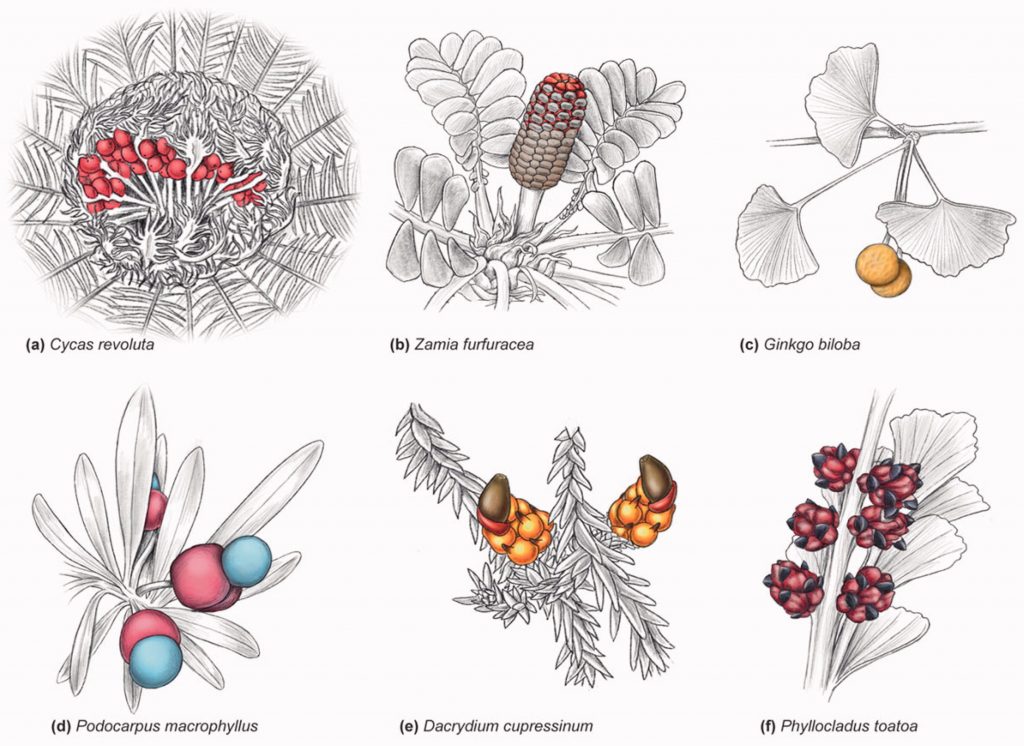 While traditionally known for having their ovules exposed to the environment, all gymnosperm lineages have species with fleshy seed-associated tissues. Here, Nigris and colleagues provide an overview of the vast diversity of fruit-like structures present in gymnosperms and the hypothesis available to explain their origin. Fleshy tissues have evolved multiple independent times through the evolution of this group, even in quite distant geological times. Moreover, they have different developmental origins depending on the group: from the ovule integument in Cycas and Gingko, passing by the ovule funiculus in Taxus, to various cone structures in Podocarpaceae and Ephedra. Given this diversity, various hypotheses have been proposed to explain the origin of fruit-like structures in gymnosperms, but most of them remain to be formally tested. Interestingly, recent studies have shown that the development of these structures shares some of the pathways found in angiosperm fruit development, such as the master regulation of MADS-box genes and the softening of tissues mediated by ethylene. Therefore, this review provides an exciting summary of the diversity of fleshy structures associated with gymnosperms seeds and a promising research agenda to unravel their origin. (Summary by Carlos A. Ordóñez-Parra @caordonezparra) Crit. Rev. Plant Sci. 10.1080/07352689.2021.1938397
While traditionally known for having their ovules exposed to the environment, all gymnosperm lineages have species with fleshy seed-associated tissues. Here, Nigris and colleagues provide an overview of the vast diversity of fruit-like structures present in gymnosperms and the hypothesis available to explain their origin. Fleshy tissues have evolved multiple independent times through the evolution of this group, even in quite distant geological times. Moreover, they have different developmental origins depending on the group: from the ovule integument in Cycas and Gingko, passing by the ovule funiculus in Taxus, to various cone structures in Podocarpaceae and Ephedra. Given this diversity, various hypotheses have been proposed to explain the origin of fruit-like structures in gymnosperms, but most of them remain to be formally tested. Interestingly, recent studies have shown that the development of these structures shares some of the pathways found in angiosperm fruit development, such as the master regulation of MADS-box genes and the softening of tissues mediated by ethylene. Therefore, this review provides an exciting summary of the diversity of fleshy structures associated with gymnosperms seeds and a promising research agenda to unravel their origin. (Summary by Carlos A. Ordóñez-Parra @caordonezparra) Crit. Rev. Plant Sci. 10.1080/07352689.2021.1938397
Interested in writing for this series? Plantae Fellows applications are open now, deadline Aug 20, 2021. https://plantae.org/fellowsapp/.




